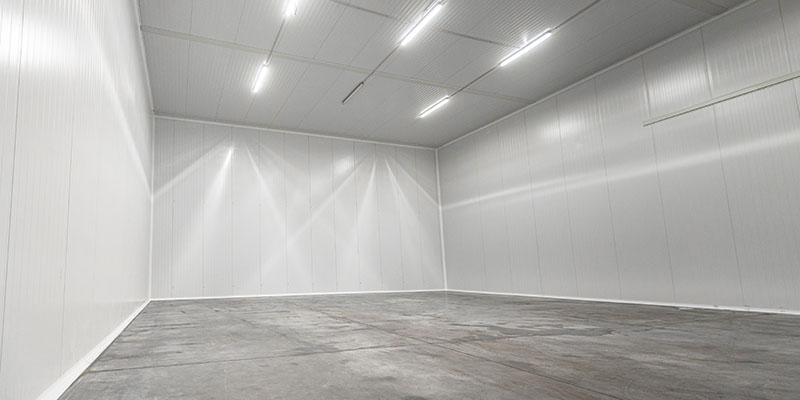COOLER AND FREEZER: NOT ONLY A MATTER OF TEMPERATURE.
We have recently received an interesting inquiry from a customer. He was asking us if we could turn an existing cooler into a freezer to save on a new installation. Eventually, we have decided to explain to you why it is not a good idea to do so. Firstly, we will shed light on the concept in common that have coolers and freezers. Secondly, we will continue with the fundamental differences between cooler and freezer.
COOLER AND FREEZER: ONE THING IN COMMON
Coolers and freezers have a concept in common: to insulate a closed environment where the inner temperature is different from the outside.
FUNDAMENTAL DIFFERENCE BETWEEN COOLER AND FREEZER
#1 DIFFERENCE: WORKING TEMPERATURE
The more noticeable difference between cooler and freezers is the different working temperatures. Coolers work above 1˚ C (34˚F), while freezers work below 0˚C (32˚F). The different working temperatures require different insulating thickness for walls and ceilings, floor insulation, and floor warming.
#2 DIFFERENCE: FLOOR INSULATION
Typically, coolers do not require floor insulation nor floor warming, but often installers place a perimeter thermal bridge breakage.
On the other hand, freezers do require floor insulation. Let’s keep in mind that in freezers, the temperature is below 0˚C (32˚F). Let’s see what happens if we don’t place floor insulation in the cold storage.
DOES FREEZER NEED FLOOR INSULATION?
FLOOR INSULATION AND FLOOR WARMING
If we don’t place floor insulation and floor warming, the humidity of the soil will turn into ice when it touches the floor slab. So the soil itself will freeze and expand, and create ices spots. This ice will heave the floor slab, damaging the building foundation and the columns. Unfortunately, once it happens, that damage is severe and extremely expensive to repair.
VAPOR BARRIER
Another crucial role belongs to the vapor barrier. Vapor barriers need to be continuous to prevent moisture penetrating from outside to the inside of the cold-room. Let’s see what happens when humidity penetrates through a vapor barrier.
Here we come up with one more difference between cooler and freezer. In a cooler, moisture will condense and form water, which one can drain off the floor. In a freezer, on the opposite, moisture will become ice. It might form ice slabs on the floor, making it slippery, or make barcodes hard to read. Ice might as well create very severe damages. It might build-up in the joint of the insulated metal panel and dilate the joints. It might build-up into slabs on the ceiling and fall, hurting workers and damaging the racks.
CONCLUSION
Knowing fundamental differences between cooler and freezer will help to understand why it is not a good idea to turn an existing cooler into a freezer. Consequently, you will save a vast amount of money at the very beginning. While coolers may forgive a lot of problems, freezers do not. Inexperienced folks only think that it’s a matter of temperature; they neglect to address moisture seriously.
OUR CORNERSTONE ARTICLES:
- What to consider when choosing an insulated panel for your project?
- High – speed door for cold storage: a valuable asset in cold – room

 WhatsApp Us
WhatsApp Us